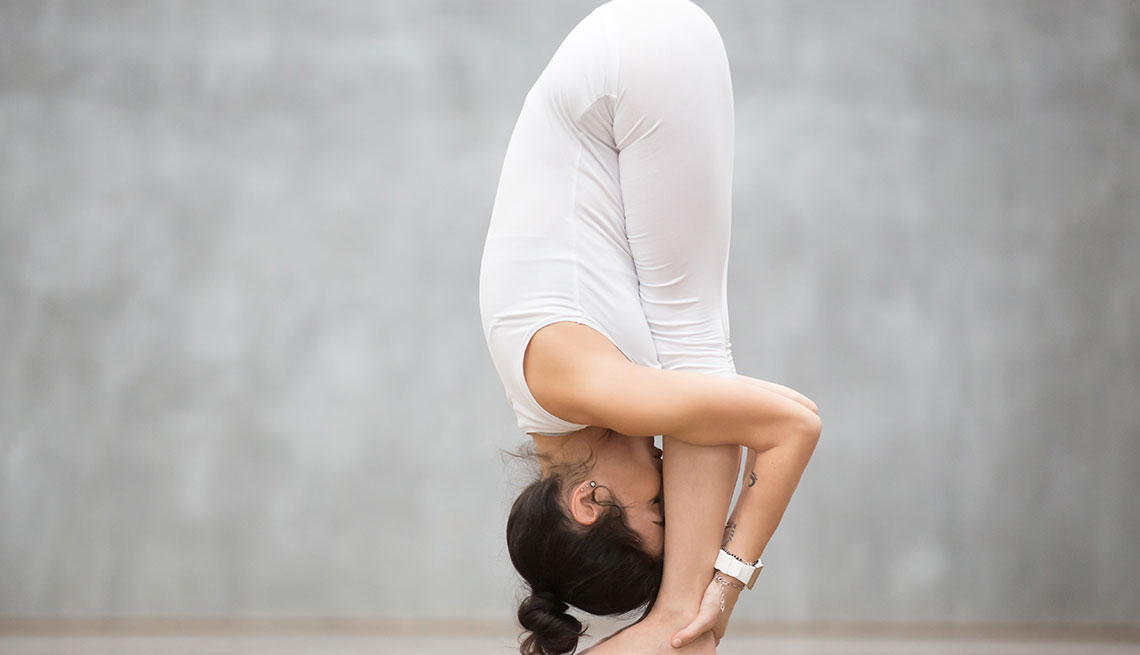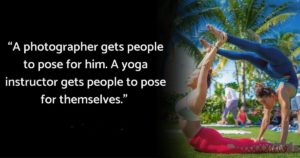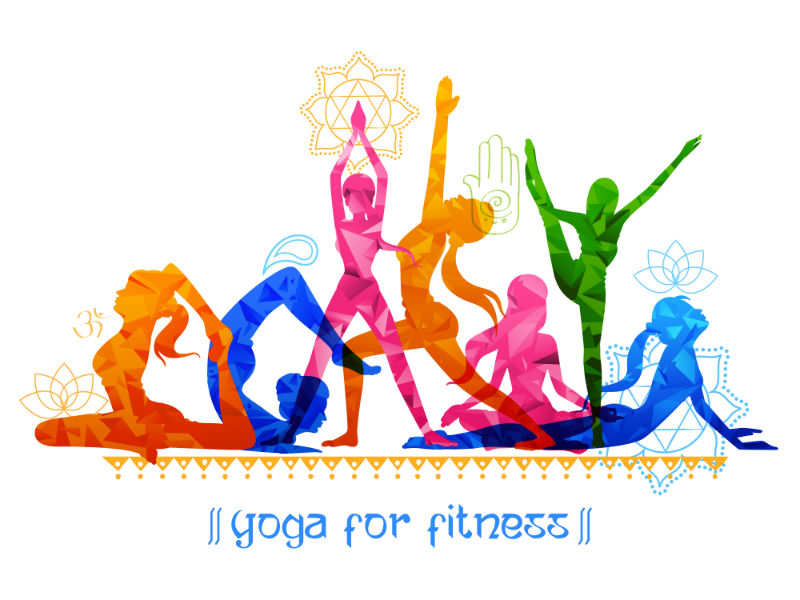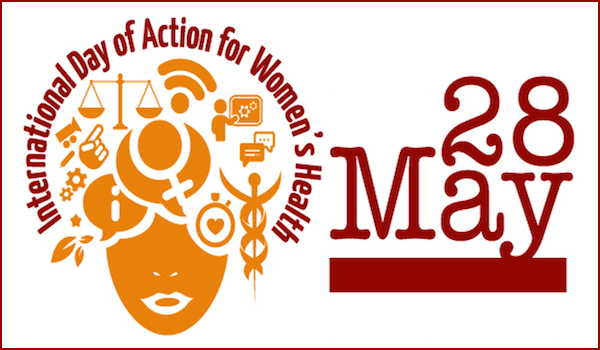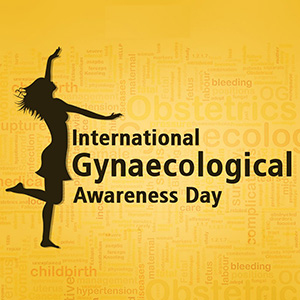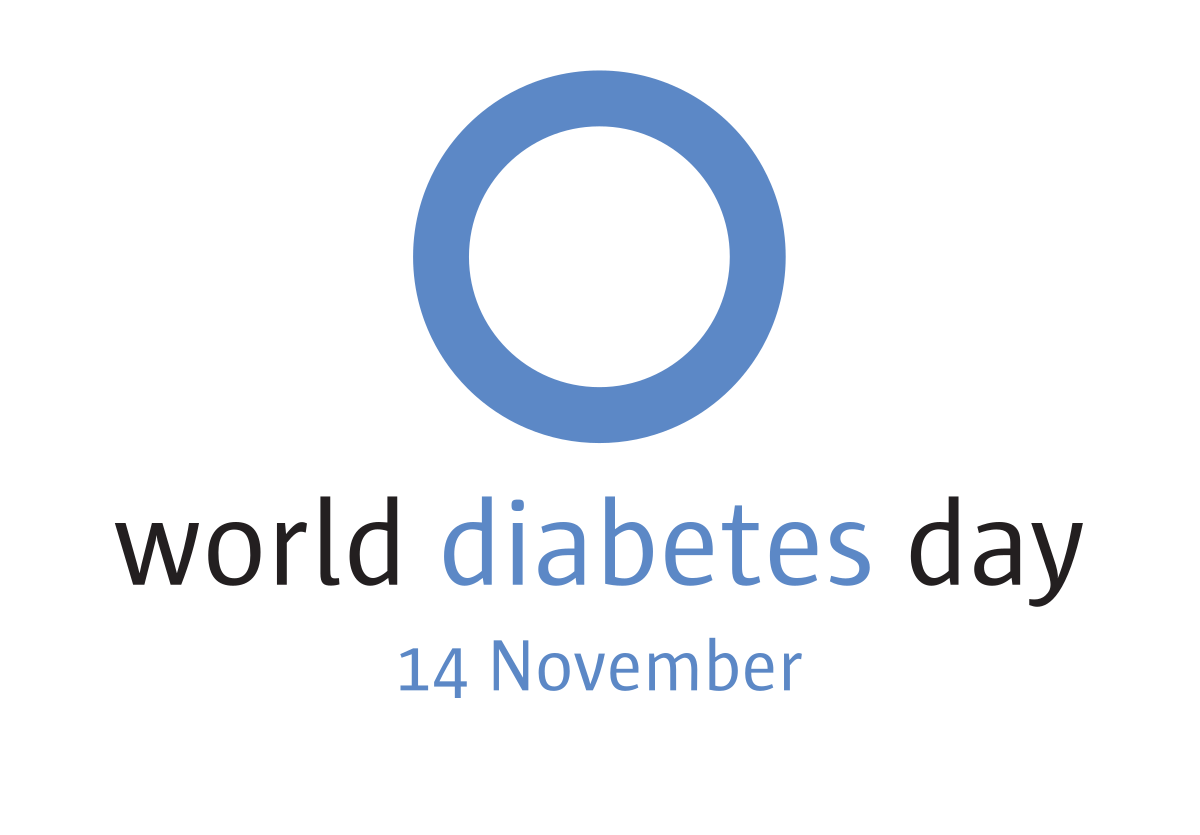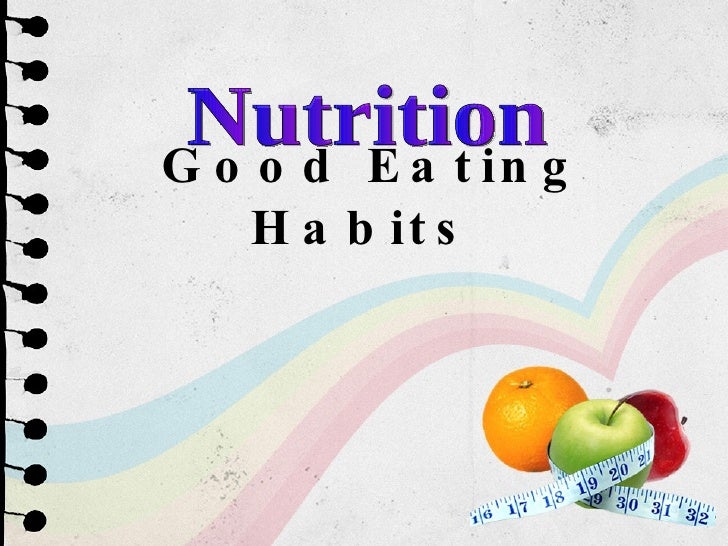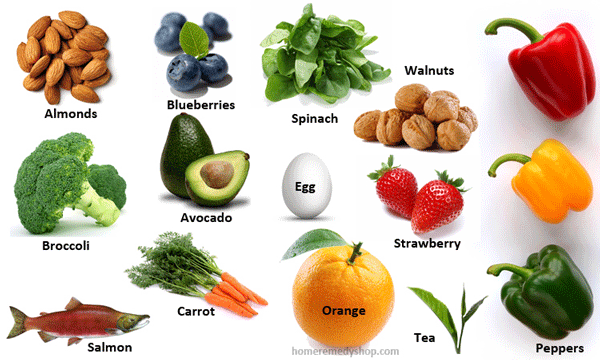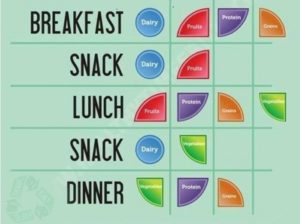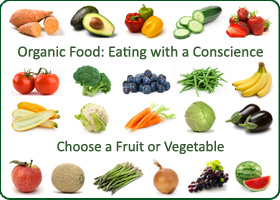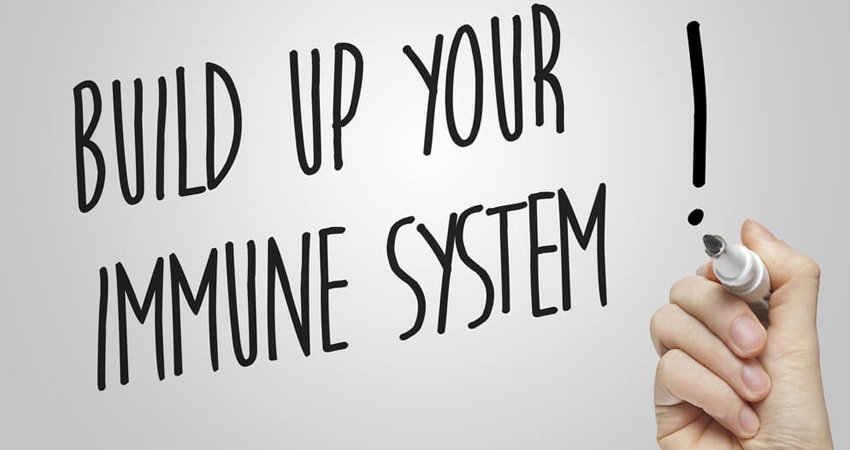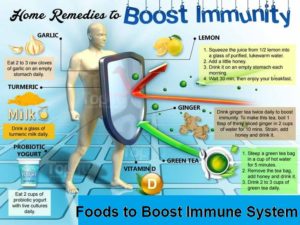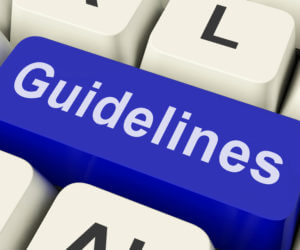
When people think about working out to lose weight, they often assume that to mean strenuous cardio and resistance training at the gym. But what if you are not ready to commit to a gym membership or simply can’t afford one? Fortunately, there are still ways to lose weight and build muscle in the comfort of your own home. If performed correctly and consistently, home workouts can be every bit as effective as a gym workout.
Each of the recommended routines focuses on strength training. The rationale for this is simple: building muscle through strength training helps to boost your metabolism and burn fat. While you will want to eventually incorporate cardio into your workout, start by getting the basics correct. By seeing and feeling the results early on, you will be more likely to keep with the program over the long term.
The simplest way to work out at home is to use your own body. There are a variety of effective body weight exercises that can help you build strength, endurance and burn calories. The downside is that, without added resistance, it’s tough to work hard enough to really challenge your body and burn calories. By going from one exercise to the next, without little or no rest, you keep your heart rate up, burn more calories and get the most out of your exercise time.

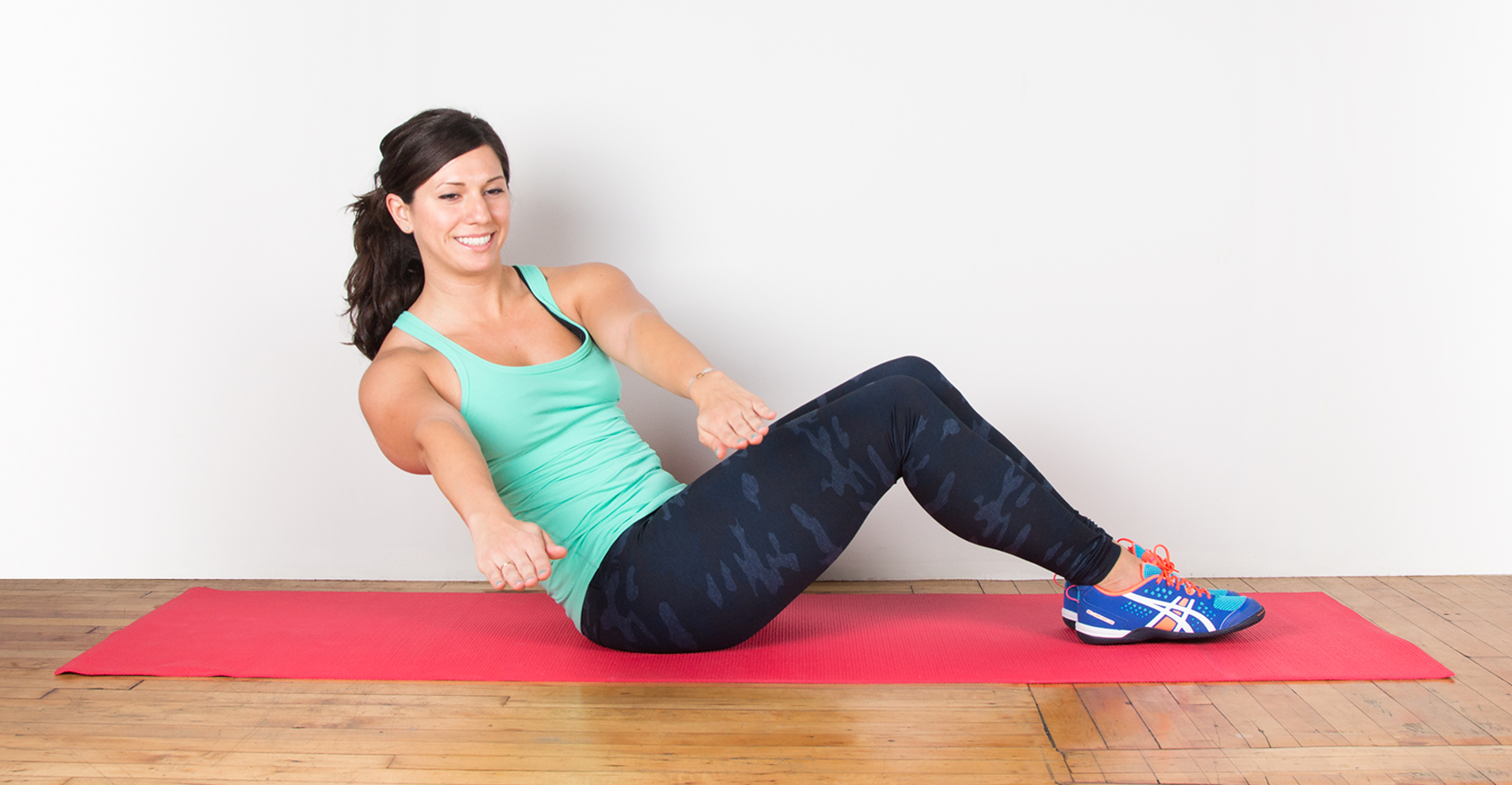

Click here for Body weight Exercises you can do at home-
You’ve probably heard people say things like, “You don’t need any equipment to have a great workout,” and “You can do these bodyweight exercises anywhere,” a hundred times. And honestly that’s great news because getting to the gym every day isn’t always a reality. But it’s not just a question of convenience (although, yes, they are convenient).
While you might think of strength training as requiring heavy weights and maybe some grunting (for good measure), the truth is that your body is itself a fantastic piece of workout equipment. Just by using the weight of your body and the power of gravity, you can build muscle, burn fat, and get an honest-to-goodness great workout. You just have to know the most effective way to put your body to work—for your body.
Keep these 53 handy moves in your at-home arsenal to work up a sweat anytime, anywhere. There are some effective bodyweight exercises for biceps and your entire upper body, as well as moves for your lower body and your core. And they aren’t just bodyweight exercises to build muscle—there are plenty of cardio-focused moves, too, which will get your heart rate up so you’re burning calories while working your muscles.
Create your own time table of a week mixing following exercises daily so that all are included in weekly program. We are sure you will always remain slim, healthy with toned body.
Start by adding one or two of these exercises to your routine. You can then mix it up as you get stronger, creating workouts of six to seven exercises of your choice (focusing on the upper body, lower body, overall body, or core).
Create your own bodyweight workouts with these exercises—know them, love them, crush them.
Squats –
- Stand with your feet about shoulder-width apart and slightly turned out with your weight in your heels.
- Hinge your hips to sit your butt back and bend your knees until your thighs are parallel to the ground.
- Drive through your heels to stand back up straight. Squeeze your butt and keep your core tight as you stand.
Reverse lunges –
- Start standing with your feet about shoulder-width apart.
- Step backwards with your left foot, landing on the ball of your foot and bending your knees to create two 90-degree angles.
- Push through your right heel to return to standing.
- Repeat on the other side.
Lateral Leg Raises –
- Start standing with your feet about shoulder-width apart.
- Step backwards with your left foot, landing on the ball of your foot and bending your knees to create two 90-degree angles.
- Push through your right heel to return to standing.
- Repeat on the other side.
Marching Glute Bridge –
- Lie faceup on your mat with your knees bent and feet flat on the floor. Lift your hips off the mat into a bridge.
- Keeping your right knee bent, lift your right foot off the floor. Try to keep your hips still.
- Hold for five seconds. Slowly lower your right foot to the ground but keep your hips lifted.
- Lift your left foot off the ground to repeat on the other side.
Spider-man Mountain Climbers –
- Lie faceup on your mat with your knees bent and feet flat on the floor. Lift your hips off the mat into a bridge.
- Keeping your right knee bent, lift your right foot off the floor. Try to keep your hips still.
- Hold for five seconds. Slowly lower your right foot to the ground but keep your hips lifted.
- Lift your left foot off the ground to repeat on the other side.
Skater Hops –
- Starting at the left of your space, squat slightly then jump to the right as far as you can.
- Land on your right foot and try not to touch your left foot down.
- Jump back across to land on your left foot.
Donkey Kicks –
- Start on all fours.
- Pull your right knee toward your chest, keeping your foot flexed.
- Then, kick your right leg up behind you and toward the sky, then back down, keeping your knee bent and foot flexed.
- Repeat on the other side.
Standing Oblique Crunches –
- Stand with your feet hip-width apart and hands behind your head and elbows wide.
- Lift your left knee toward your left elbow while you bend your torso up and over to the left.
- Repeat on the other side.
Single-leg Glute Bridges –
- Lie on your back with your knees bent and feet flat on the floor.
- Lift your left leg straight up above you, toes pointing at the ceiling. Your left knee should be directly over your left hip.
- Raise your hips and lower them back to the ground, keeping your leg in the air.
- Repeat on the other side.
Donkey Whips –
- Start on all fours.
- Lift your right leg, extending it behind you.
- Swing your right leg to the right side and then back to center.
- Repeat on the other side.
Curtsy Lunges with Side Kick –
- Stand tall with your feet hip-width apart.
- Step your left leg diagonally behind your right leg and bend your knees to lower into a lunge.
- Push through your right heel to stand, and sweep your left leg out to the side.
- Repeat on the other side.
Wide-Grip Push-ups –
- Start in a high plank position with your hands flat on the floor a little bit wider than shoulder-width apart, wrists under shoulders.
- Keeping your body in one long line, bend your arms and lower yourself as close to the floor as you can.
- Push back up to start.
Froggers –
- Stand with your legs wider than hip-width apart, knees bent, and upper body hinged slightly forward.
- Place your hands on the ground in front of you, then jump your straight legs back into a high plank.
- Jump your feet to the outsides of your hands and bring your hands toward your chest to return to the starting position.
High Knees –
- Stand with your legs wider than hip-width apart, knees bent, and upper body hinged slightly forward.
- Place your hands on the ground in front of you, then jump your straight legs back into a high plank.
- Jump your feet to the outsides of your hands and bring your hands toward your chest to return to the starting position.
Plank Jacks –
- Stand with your legs wider than hip-width apart, knees bent, and upper body hinged slightly forward.
- Place your hands on the ground in front of you, then jump your straight legs back into a high plank.
- Jump your feet to the outsides of your hands and bring your hands toward your chest to return to the starting position.
Side Lunges –
- Stand with your legs wider than hip-width apart, knees bent, and upper body hinged slightly forward.
- Place your hands on the ground in front of you, then jump your straight legs back into a high plank.
- Jump your feet to the outsides of your hands and bring your hands toward your chest to return to the starting position.
Side Step Squats –
- Stand tall with your feet together and hands on your hips.
- Step your right foot to the right, so your feet are just wider than shoulder-width apart.
- Drop your butt back and bend your knees to lower into a squat.
- Straighten your knees and bring your foot back to the starting position.
- Repeat on the other side.
Lateral Plank Walks –
- Start in a high plank with your shoulders above your wrists and abs tight.
- Step your right foot and right hand to the right, immediately following with your left foot and left hand. Take a few “steps” in one direction, then walk in the opposite direction.
Forward to Reverse Lunges –
- Stand with your feet hip-width apart.
- Step forward with your left foot into a forward lunge, with both knees bent so that your knees so that the front thigh is parallel to the floor and the back knee is about two inches from the floor.
- Push off your front foot, hover your foot as you stand straight up, and immediately step back into a reverse lunge.
- Drive through your front foot to stand back up.
Push-ups –
- Start in a high plank position with your hands flat on the floor about shoulder-width apart, wrists under shoulders.
- Keeping your body in one long line, bend your arms and lower yourself as close to the floor as you can. Your elbows should be at about a 45-degree angle to your torso.
- Push back up to start.
Jump Squats –
- Stand with your feet slightly wider than hip-distance apart.
- Sit your butt back and bend your knees to drop into a squat, keeping your chest upright.
- Jump up into the air as high as you can and straighten out your legs.
- Land back on the floor with soft knees.
Forward Lunges –
- Stand with your feet together.
- Take a big step forward with your right foot. Bend your right leg until your front thigh is parallel to the floor and your back knee is just barely touching the floor.
- Push up through your back front heel to return to the start position.
- Repeat on the other side.
Plank Ups –
- Start in a high plank. Bend one arm to bring the elbow and forearm to the floor.
- Bring the other arm down so you are in a forearm plank.
- Push back up to the start position, placing each hand where your elbows were.
- Repeat this pattern, alternating which side you lower first with each rep.
Squat Jacks –
- Start standing with your feet together, hands at your chest.
- Jump your feet out and sit back into a small squat.
- Jump your feet back together to return to standing.
Extended Leg Pulses –
- Bring your right knee to your chest and extend the right leg to the ceiling. Keep your left leg extended and off the floor about 3 to 5 inches.
- Interlace your fingertips behind your right knee.
- Using your abs (not your hands), pulse your upper body up 3 to 5 inches. Make sure your low back stays planted firmly on the floor.
- Repeat on the other side.
Hip Bridges –
- Start lying flat on your back, your knees bent and your heels a few inches away from your butt. Your feet should be about hip-distance apart.
- Lift your hips up, then lower them back to the ground.
Fire Hydrants –
- Start on all fours.
- Lift your right leg to the side, keeping your knee bent, until your knee reaches hip height.
- Lower to start, hovering your knee above the ground.
- Repeat on the other side.
Power Lunges –
- Stand with your feet hip-width apart.
- Lunge back with your right foot, bending both knees 90 degrees.
- Straighten your left leg and jump into the air while driving your right knee up in front of your body.
- Immediately lower your right foot back into a lunge.
- Repeat on the other side.
One-legged Balance Taps –
- Stand with your feet together, arms straight at your sides.
- Slowly hinge forward at the hips, keeping your back flat as you lift your right leg out straight behind you and reach your right arm down toward the floor.
- At the bottom of the movement, your torso and right leg should be almost parallel to the floor.
- Keeping your core tight, stand up straight, keeping the right leg straight (and keeping the weight in your left foot).
- Repeat on the other side.
Trunk Rotations –
- Start in a high plank with your core engaged.
- Bring your left knee underneath your body toward your right elbow by twisting your torso slightly.
- Repeat the movement alternating sides.
Plie Squat Pulses with One Foot Raised –
- Start standing with your feet wide and your toes slightly turned out.
- Bend your knees into a slight squat and lift your left heel so you’re on your toes. Keep your right foot flat on the ground.
- Lower your butt a few inches toward the ground while keeping your chest up. Continue pulsing up and down.
- Repeat on the other side.
Single-leg Kickbacks –
- Start on all fours with your knees under your hips and hands under your shoulders.
- Lift your left leg and flex your foot as you kick it back behind you and straighten your leg.
- Return to start.
- Repeat on the other side.
Burpees –
- Stand with your feet shoulder-width apart, arms by your sides.
- Bend your knees and reach forward to place your hands on the floor.
- Kick your legs straight out behind you and immediately lower your entire body down to the ground, bending at the elbows.
- Use your arms to quickly push your body back up and hop your legs back under your body.
- Jump straight up into the air, reaching your arms overhead. End with your knees slightly bent.
Single-leg Reach and Jumps –
- Stand with feet hip width apart, hands at your sides.
- Hinge at your hips and bend your knees to extend your left leg behind you (no higher than your hips) as you reach your left arm to ground about a foot ahead of where your left foot was.
- Drive your left knee up to return to an upright position, and hop on your right foot.
- Repeat on the other side.
Plank Taps –
- Start in a high plank with your feet hip-width apart.
- Tap each hand to the opposite shoulder while engaging your core to keep the hips as still as possible.
Side Kicks –
- Stand next to a wall, far enough away so that you can bend your torso forward and press your palms against it, elbows bent.
- Place both hands on the wall. Lift your right leg off the ground, parallel to the floor.
- Bring your right knee in toward your right elbow. Then, flex your foot and kick the leg back out straight to the parallel position.
- Repeat on the other side.
Bear Planks –
- Start on your hands and knees in tabletop position with your wrists above your shoulders and your knees below your hips.
- Lift your knees just a few inches off the ground. Use your core to balance and keep your back flat.
- Slowly tap your hand to your opposite knee. Repeat, alternating sides.
- Keep your torso still and try not to twist your body.
Bicycle Crunches –
- Sit on floor with your knees bent, feet lifted, and your hands behind head.
- Keep your chest up and back straight as you lean back to engage your abs.
- Twist to bring your right elbow to your left knee, straightening your right leg.
- Alternate sides with control.
Forearm Side Planks Twists –
- Start in a forearm side plank on your left side with your left elbow on the floor below your shoulder.
- Place your right arm behind your head.
- Rotate your torso toward the floor, bringing your right elbow to meet your left hand.
- Repeat on the other side.
Alternating Knee-to-Chests –
- Lie on your back and extend one leg out a few inches off the ground. Hold the opposite knee into your chest.
- Switch legs, bringing your nose to the knee that is in toward your chest each time.
- Keep your lower back down, head lifted off the ground, and abs engaged.
Single-Leg Walk Out to Push-ups –
- Start with your feet hip-width apart, hands at sides. Lift your left leg slightly off the ground.
- Bend at your hips to reach hands to floor and crawl out to a high plank, keeping your left leg hovering off the ground.
- With shoulders over wrists and abs engaged, do a push-up.
- Crawl your hands back to your feet and stand.
- Repeat on the other side.
Diamond Push-ups –
- Start in a high plank. Walk your hands together so that your thumbs and forefingers form a triangle.
- Bend your elbows to lower your chest and torso toward the floor and then push back up.
Plank With T-Rotations –
- Start in a high plank with your feet hip-distance apart.
- Now rotate your entire body to the right into a side plank with your shoulder above your wrists.
- Extend your right arm to the ceiling and continue to drive your hips up.
- Return to center position, then repeat on the opposite side.
Bird Dog Crunches –
- Start on your hands and knees in tabletop position with your wrists above your shoulders and your knees below your hips.
- Inhale and extend your right arm forward and left leg back, maintaining a flat back and keeping your hips in line with the floor.
- Squeeze your abs and exhale as you draw your right elbow to your left knee.
- Extend back out to start.
Down Dog Abs –
- Start in down dog and lift your right leg into the air. This is your down dog split position (also known as three-legged down dog).
- Bring your right knee under your torso. Pause then extend your right leg back to down dog split.
- Now bring your right knee to meet your right elbow. Pause then extend your right leg back to down dog split.
- Finally, bring your right knee across your torso to meet your left elbow. Pause then extend right leg back to down dog split.
- Repeat the same sequence on the other side.
Side Plank Dips –
- Start in a side plank, with your left foot stacked on top of your right and your body in a straight line.
- Drop your hips toward the floor and raise back to starting position (or a little higher, if you can).
- Repeat on the other side.
Mountain Climbers –
- Start in a high plank and draw your right knee under your torso, keeping your toes off the ground.
- Return your right foot to the starting position.
- Switch legs and bring your left knee under your chest. Keep switching legs as if you’re running in place.
Plank Hops –
- Begin in a high plank with your feet together.
- Tighten your abs and jump your feet to the right, bringing your knees toward your right elbow.
- Jump your feet back to plank and repeat on the other side.
Side Plank Rotations with Kick –
- Start in a high plank with your shoulders over wrists, abs engaged, and glutes tight.
- Lift your left foot and kick it under your torso toward the right side of your body. At the same time, reach your right hand to touch your left foot, balancing on your left arm and right leg.
- Repeat on the other side.
V-Ups –
- Lie faceup with your arms and legs extended and resting on the floor.
- Keep your abs tight and lift your hands and feet to meet over your torso, rolling your core as you sit up.
- Lower your arms and legs back to the floor.
Dead Bugs –
- Lie on your back with your arms at shoulder level raised toward the ceiling. Bring your legs up into tabletop position (knees bent 90 degrees and stacked over your hips).
- Slowly extend your right leg out straight, while simultaneously dropping your left arm overhead. Keep both a few inches from the ground.
- Bring your arm and leg back to the starting position.
- Repeat on the other side, extending your left leg and your right arm.
Sit-Ups to Twists –
- Lie on your back with your knees bent and feet flat to the floor.
- Place your hands behind your head, engage your core and do a full sit-up. At the top of the sit-up, bring your right elbow to your left knee and twist your body toward that side.
- Lower back down to start.
- Repeat this movement alternating sides each time.
Jumping Lunges –
- Start in a lunge with your left leg forward, hands at your sides. Bend both knees to 90 degrees, keeping your abs tight and back straight.
- Swing arms to propel your body up, straightening your legs. Land back in a lunge and continue jumping.
- Repeat on the other side.

Click here for Simple Home Exercises for women -
It’s no secret that squeezing in exercise around your work, family and social commitments is sometimes tricky to pull off. But it doesn’t have to be that way. Little exercises done here and there still add up to burn calories and make you stronger. And you don’t have to buy equipment, change your schedule or even sweat. Just do this easy home workout throughout the day.
Each one takes a minute or two; by nightfall, you’ll have worked your whole body. So start your transformation—today.
Beginners workout – In this beginner’s workout plan, you will focus on the large muscles that provide you stability and core strength. You won’t need any special equipment. You can do the exercises together in one workout session or split them up throughout the day. Take your time with the exercises and modify them to fit your needs.
Total Body Strength for Beginners –
Precautions: See your doctor before trying this workout if you have any injuries, illnesses or other conditions.
Equipment Needed: Light-medium dumbbells, an exercise ball or chair, and a mat.
How-To Tips:
- Begin with a 5- to 10-minute warm-up of light cardio (walking in place, etc.)
- Perform 1 set of 12 reps of each exercise. For the weighted exercise, choose a weight that allows you to complete 12 reps. The last rep should be difficult, but not impossible.
- For more challenge, try Total Body Strength 3 which contains more difficult exercises.
- Do this workout 1 to 3 non-consecutive days a week, taking at least one day of rest between workouts.
Assisted Lunges –
To perform the assisted lunge, stand in split stance, feet about 3 feet apart using a chair or wall for balance. Keeping torso straight, bend knees and lower body towards the floor without allowing front knee to bend over the toe (you should see the tip of your shoe). Push through the heel to come back up without locking the knees.
Repeat for 1 set of 12 reps and then repeat the series with the other leg forward. If this bothers your knees, consider alternatives to lunges.
Bird Dog –
For the bird dog, negin on hands and knees with the back straight and the abs pulled in. Lift the right arm up until it is level with the body and, at the same time, lift the left leg up and straighten it until it is parallel to the floor. Hold for several seconds, lower and repeat on the other side, this time lifting the left arm and right leg.
Continue alternating sides for 12 reps (1 rep includes both the right and left sides).
Seated triceps Extension –
To perform triceps extensions, sit on a ball or chair and hold a light-medium dumbbell or medicine in both hands (hold on the top of the weight) with arms extended overhead, elbows next to ears, arms straight. Bend elbows and slowly lower weight behind you until elbows are at 90 degrees–keep the elbows in and right next to ears. Contract the back of the arms to extend the arms.
Repeat for 1 set of 12 reps.
Floor Squats with a ball –
Stand with feet wider than shoulders and place hands on an exercise ball. Roll the ball out as you bend your knees, lowering the hips into a squat. Keep the abs in, the back straight and make sure you keep the knees behind the toes as you squat. Stand back up as you roll the ball in, squeezing the glutes (avoid locking the knees).
Repeat squats for 1 set of 12 reps.
Wall Pushup –
For a wall pushup, stand a few feet away from a wall or a high stair railing (as shown) and place hands on wall or rail so that they’re just wider than the shoulders. Pull the abs in and, keeping back straight, bend elbows and lower body towards the wall/rail until elbows are at 90-degree angles. Push back to start.
Repeat for 1 set of 12 reps.
One Arm Row –
Place left foot on a step or raised platform. You can also prop one knee on a weight bench.
Hold a weight in the right hand and prop the left hand on the left thigh for support as you bend over (back flat and abs in), hanging the weight down towards the floor. Squeeze the back to pull the elbow up in a rowing motion until it is level with the torso. You should feel your lats (the muscles on either side of your back) contracting. Lower the weight.
Repeat for 12 reps before switching sides.
Lateral Raise –
Stand with feet hip-width apart holding light dumbbells in front of thighs with the palms facing each other. Keep a slight bend in the elbows to protect the joints and lift the arms out to the sides, just to shoulder level. Lower the weights.
Repeat for 1 set of 12 reps.
Hammer Curls –
Stand with feet about hip-width apart, holding medium dumbbells with the palms facing in. Squeeze the biceps to curl the weights towards the shoulders, keeping the elbows stationary. Slowly lower the weights, keeping a slight bend in the elbows at the bottom.
Repeat for 1 set of 12 reps.
Seated Rotation for Abs –
Sit with good posture holding a medium dumbbell in front of chest. Keeping the abs contracted, rotate the torso to the right while keeping the hips and legs facing forward. Contract abs to bring the weight back to center and then rotate to the left. Repeat for 12 reps.
Sit with good posture holding a medium dumbbell in front of chest. Keeping the abs contracted, rotate the torso to the right while keeping the hips and legs facing forward. Contract abs to bring the weight back to center and then rotate to the left.
Repeat for 12 reps.
Aim to perform two to three sets involving 10 to 12 repetitions (reps) of each exercise. If you can only do four or six to start, that’s okay. The aim is to perform an exercise so that you are slightly shaky by the final rep. Every week thereafter, aim to increase the reps until you are finally able to do three sets of 12.
- While putting away laundry : Do step workouts : Make 5 trips up and down a set of stairs for each load of laundry you put away. At the bottom of each trip, lift the laundry basket up to shoulder height five times.
TARGETS: Cardiovascular system and arm muscles
- While your coffee brews – Do a wall sit :
Rest your back, neck and head against a wall, with feet about a foot and a half away, then bend your knees, slide your body toward the ground until your thighs are parallel to it, and hold for 15 seconds. (Work up to 1 minute.)
TARGETS: Thigh and glute muscles
- While emptying the dishwasher – Do squats : Rest your back, neck and head against a wall, with feet about a foot and a half away, then bend your knees, slide your body toward the ground until your thighs are parallel to it, and hold for 15 seconds. (Work up to 1 minute.)
TARGETS: Thigh and glute muscles
- While at the sinks to wash your hands – Do standing push-ups : Stand about 2 feet from a counter and, with your arms at shoulder height, place your palms against it. Keeping your body in a straight line, do 20 standing push-ups.
TARGETS: Chest and arm muscles
- While sitting at a desk – Do desk pushes : Sit in a chair pulled very close to a desk. With your palms facing up, place them under the desk and push up as hard as you can—as if you were trying to lift the desk off the ground—for 30 seconds. Rest for 10 seconds, then repeat twice.
WORKS: Upper body
- While lying on bed – Do half-bridges : Lie on your back (no pillow), knees bent and feet flat on the bed. Tighten your stomach muscles, squeeze your buttocks and lift your hips, aiming to create a straight line from your knees to your shoulders. Hold for 15 seconds. (Work up to 30 seconds.) Rest for 10 seconds, then repeat 3 times.
WORKS: Glutes, hips, abs and back
- While playing with your kids – Do a Plank : Lie facedown on the floor, then push up your body so just your toes and forearms are on the ground. (If that’s too tough, keep your knees on the ground as well.) If your kids are small, let them crawl on top of you or underneath you.
WORKS: Core
MAKE IT FUN: If your kids are older, turn planks into a competition: Who can hold one the longest?
The type of exercise you choose to do is less important than the consistency of your program. But if you are short on ideas, here are five simple workouts to get you started.
- Dance. Put on some music, grab your kids, your sweetie, or go solo and groove for at 15-30 minutes. If your neighbors see you in the window, give them a few tips about the benefits of easy exercise and invite them to join you.
- Online workouts. If you want to avoid the gym, exercise at home. It’s easy to do with online workouts. Many of them are free and most offer easy workouts for beginners. Plus you can enjoy the benefit of working out in the privacy of your own living room.
- Bodyweight training. You don’t need any special gym equipment to burn calories and build stronger muscles. Take 10-15 minutes to do simple strength training activities. Try doing 5 incline push-ups against a wall, 5 chair squats, and 5 walking lunges. If walking lunges are too challenging, then do a set of stationary lunges holding on to a countertop for support. Repeat the sequence 2-3 times. Your arms and legs will get stronger and your body will appreciate the extra activity.
- Chair Workout. If you are not yet comfortable standing for long periods of time, grab a sturdy chair and complete 10-15 minutes of movement with this workout several times each week.
- Shadowboxing. If dancing isn’t your cup of tea, take advantage of the latest fitness craze and try shadowboxing at home. No equipment is required for this workout and it helps to decrease stress as well.
In this advanced workout program, you will need a set of resistance bands and an exercise ball. These tools can help further strengthen the muscles used for stability.
To create a balanced exercise program, workout two to three times per week. Be aware that your weight may drop at first but then increase slightly as you build muscle mass. By this stage, your success should be measured not only in pounds and inches but how you feel look and feel.
If ever you reach a plateau, simply increase the intensity or duration of your workout. Your body will respond in kind, putting you back on the fast track to weight loss.

Click here for Yoga Workout on the exercise Ball -
If you enjoy yoga, there are plenty of ways to shake up your usual routine and one is adding new tools to the mix.
Using exercise ball is just one of those options and a great way to give your body a different kind of support to help you increase balance and flexibility.
The stability ball is a great way to get extra support for moves that require endurance and flexibility and it also adds a balance challenge to some poses.
The lack of stability only adds to the workout, firing up different muscles and strengthening the connective tissue that supports the joints of the body.
The size of the ball makes a difference and you may want to use a smaller ball for some movements. Take your time with these moves and use extra support when needed. Always avoid any exercises that cause pain or aggravate any injuries.
Life can get busy, and oftentimes we find ourselves traveling or otherwise unable to get to our preferred health and fitness facility for a workout. Following exercise will help you stay on track, no matter where you find yourself. Using only your own body weight, these versatile moves can help you create a total-body at-home workout that fits your needs and abilities.
Yoga workout on the exercise ball –
Equipment Needed : An exercise ball and a mat
How to Do Yoga on the Exercise Ball
- Perform the exercises as shown, completing 1-3 sets of each exercise.
- Take your time with the moves and prop the ball against the wall or a sturdy surface if you feel wobbly. If you have a step riser, you can also put the ball on that so that it doesn’t move. Some poses are more challenging than others, so use your best judgment and set the ball aside if you need to.
- Avoid any exercises that cause pain or discomfort.
Rolling Squats with the ball –
Stand with feet hip-distance apart and the ball in front of you. Tip from the hips, keeping the back straight and abs in and put the hands on the ball. Squat, sending the hips straight back, and, keeping the knees behind the toes, roll the ball out as far as you can, stretching the arms and chest. Inhale and straighten the knees while rolling the ball back in.
Repeat for 10 reps.
Upward facing dog and downward facing dog –
Put your ball on the mat and come down to your hands and knees with the ball in front of you. Lean your torso into the ball, rolling forward until your hips are centered on the ball, legs straight out behind you. Press your hands into the ball and inhale as you push the chest up and straighten the arms, looking up in an upward facing dog position.
Exhale and roll forward, placing hands on the floor pushing the body up into an inverted v position, arms and legs straight and heels pressing towards the floor, as in a downward dog. Position the ball so that your chest and upper thighs are supported if you can. If the ball is a larger size, you may need to do this move without the ball.
Inhale and move back into up-dog, alternating each for 10 reps.
Downward dog with leg lift to lunge stretch –
In the downward dog position with the ball supporting the chest and thighs, inhale and lift the right leg straight up until your body is in a straight line.
Hold for one breath, lower the leg and swing it down to the floor, knee next to the ball. Lean your hips into the ball for support and sweep the arms overhead.
Hold for 3-5 breaths then lift the back knee off the floor, using the ball to support the hips. Hold for 3 breaths and repeat the series on the other leg.
Seated spinal rotation –
Sit on the ball and, if you need more stability, make sure the ball is against a wall. Extend the legs straight out in front, wider than the shoulders, flex the feet and take the arms straight up and out to the sides at shoulder level.
Sit tall and, keeping the back straight, rotate the torso to the right and reach the left arm out and towards the right foot. Feel a stretch in the hamstring and feel the core contract.
Rotate back to center and then to the left, reaching for the toes. Continue rotating, concentrating on lengthening the spine. Repeat for 10 reps on each side.
Seated Stork Pose –
This move can be very challenging so you might want to do this onto a chair or prop the ball against the wall for some support. You can also sit sideways to a wall and hold on for balance.
Sit on the ball and cross the right foot over the left knee. This will require you to balance on the left foot while the ball moves, which is very challenging.
When you have your balance, bring the palms together in front of the chest. Inhale and slowly take the arms up overhead, leaning forward to deepen the stretch if you can. Again, this will challenge your balance even more, so modify as needed to stay safe.
Hold for 3 breaths, lower and repeat on the other side.
Warrior I to Warrior II and side angle –
Get into a lunge position on the ball, right leg forward and the left leg straight out behind you, foot flat. You should essentially be sitting on the ball.
Square the hips forward and sweep arms overhead and slightly back. Hold for 3 breaths and then lower the arms and turn the body to the side, stretching through the arms.This is the Warrior II position and you should feel a stretch in the inner thighs.
Hold for 3 breaths.
From there, take the right arm down and place the hand on the floor while stretching the left arm straight up. You should still be supported on the ball. Hold for 3 breaths. Repeat the series on the other side.
Torso Rotation –
For this one, you’ll be on your hands and knees with the ball next to you. This move is very challenging on the inner thigh, so your ability to do this may depend on how flexible you are.
On the hands and knees, straight the right leg straight out to the side and put the foot on the ball. You should be resting on the left knee, with the right leg straight, the knee facing the front of the room.
If you feel comfortable doing so, gently rotate the spine and take the right arm straight up, turning the head to look up at that hand while the left arm stays on the floor. Hold for 3 breaths and switch sides.
Prone Scissor Kicks –
For this move start on the knees in front of the ball. Lean forward onto the ball and roll forward until the ball is under the hips and torso and you’re resting on your forearms. Your legs should be straight out behind you.
Keeping the feet flexed, slowly open the legs wide, focusing on the outer thighs. Bring them back together in a scissor motion while keeping the abs contracted. Repeat for 10 reps.
Superman on the ball –
For this exercise, you’ll be on your hands and knees, but with the ball under you. So, begin kneeling in front of the ball and then lean into the ball and roll forward just a bit until your hands are on the floor as well.
If your ball makes it impossible to but both hands and knees down, try this without the ball.
Lift the left arm straight up and then the right leg and hold for a beat. Lower and repeat on the other side, lifting the right arm and the left leg. Continue, alternating sides for 10-12 reps.
Child’s Pose –
Kneel in front of the ball and slowly sit back on the heels, hands resting on the ball. As you sit back, roll the ball forward, relaxing the head and stretching through the chest. Shift the hips to the right and gently roll the ball to the left the stretch through the back, repeating on the other side. Hold each stretch for 15 seconds.
Forearm Balance –
This is another very challenging pose where you’ll be holding your position with only your forearm, hip, and legs.
Start by positioning yourself with the right hip on the ball, upper body resting on the forearm. Your legs should be straight and stacked on top of each other, resting on outside of the left foot.
If you feel able to, find your balance and slowly lift the left leg up while taking the left arm straight up to the sky. Hold for 3 breaths and then repeat on the other side.
Bridge on the Ball –
Lie on your back resting the feet on the ball with your knees bent. Contract the abs in inhale to slowly roll the spine off the floor, pressing the feet into the ball, and bringing your body into a bridge position. Use your feet to keep the ball from rolling around.
Hold for a beat and then exhale and roll the spine down onto the mat, making continuous contact with each part of the spine. Repeat for 10 reps.
Lying Hip Stretch –
Lie on your back and rest the right heel on the ball, knee bent at 90 degrees. Cross the left foot over the right knee and use the foot on the ball to gently roll the ball in, pushing out on the left knee to stretch the right hip.
This is similar to a figure 4 stretch, only you’re using a ball.
Hold for 15 seconds and repeat on the other side.


Click here for Office Workout moves at your desk -
If you have trouble staying fit at work, these office exercises are a great way to keep your body moving right at your desk. The moves here involve stretching and strengthening your body, all within the comfort of your office chair. This workout doesn’t take the place of traditional strength training, but it offers you a way to keep your blood moving if you can’t get away from your desk.
Precautions
See your doctor before trying this workout if you have any injuries, illnesses or other conditions. Make sure the chair you use is stable. If you have wheels, push it against a wall to make sure it won’t roll away.
Equipment Needed
You will need a chair and a full water bottle.
Stretches for your Wrists and Arms –
Wrist Stretch: Extend an arm in front, palm up and grab the fingers with your other hand. Gently pull the fingers towards you to stretch the forearm, holding for 20-30 seconds. Repeat on the other side.
Wrist and Forearm: Press hands together in front of chest, elbows bent and parallel to the floor. Gently bend wrists to the right and left for 10 reps.
Lower Back Stretch (pictured): Sit tall and place the left arm behind left hip. Gently twist to the left, using the right hand to deepen the stretch, holding for 20-30 seconds. Repeat on the other side.
Lower Body Exercises –
Hip Flexion: Sit tall with the abs in and lift the left foot off the floor a few inches, knee bent. Hold for 2 seconds, lower and repeat for 16 reps. Repeat on the other side.
Leg Extension: Sit tall with the abs in and extend the left leg until it’s level with hip, squeezing the quadriceps. Hold for 2 seconds, lower and repeat for 16 reps. Repeat on the other side.
Inner Thigh: Place towel, firm water bottle or an empty coffee cup between the knees as you sit up tall with the abs in. Squeeze the bottle or cup, release halfway and squeeze again, completing 16 reps of slow pulses.
Chair Exercises-
Chair Squat (pictured): While sitting, lift up until your hips are just hovering over the chair, arms out for balance. Hold for 2-3 seconds, stand all the way up and repeat for 16 reps.
Dips: Make sure chair is stable and place hands next to hips. Move hips in front of the chair and bend the elbows, lowering the body until the elbows are at 90 degrees. Push back up and repeat for 16 reps.
One-Leg Squat: Make sure the chair is stable and take one foot slightly in front of the other. Use the hands for leverage as you push up into a one-legged squat, hovering just over the chair and keeping the other leg on the floor for balance. Lower and repeat, only coming a few inches off the chair for 12 reps. Repeat on the other side.
Upper Body Exercises –
Front Raise to Triceps Press: Sit tall with the abs in and hold a full water bottle in the left hand. Lift the bottle up to shoulder level, pause, and then continue lifting all the way up over the head. When the arm is next to the ear, bend the elbow, taking the water bottle behind you and contracting the triceps. Straighten the arm and lower down, repeating for 12 reps on each arm.
Biceps Curl: Hold a water bottle in right hand and, with abs in and spine straight, curl bottle towards shoulder for 16 reps. Repeat the other side.
Ab Exercises –
Side Bends: Hold a water bottle with both hands and stretch it up over the head, arms straight. Gently bend towards the left as far as you can, contracting the abs. Come back to center and repeat to the right. Complete 10 reps (bending to the right and left is one rep).
Ab Twists: Hold the water bottle at chest level and, keeping the knees and hips forward, gently twist to the left as far as you comfortably can, feeling the abs contract. Twist back to center and move to the left for a total of 10 reps. Don’t force it or you may end up with a back injury.
Moving More at a Work –
Beyond working out at your desk, there are a few tricks for staying active at work. Taking the stairs when you can, parking further away from the door and walking around the office when you can are good places to start. Beyond that, there are a few other options to keep you moving:
- If it’s allowed, sit on an exercise ball instead of a chair. This will strengthen your abs and back and you’ll work on your posture without even trying.
- Set an alarm to go off every hour to remind you to stand up, stretch, and move around. Even if you just swing your arms or take a deep breath, you’ll feel more alert.
- Use the restroom on another floor and take the stairs.
- Use a pedometer or activity monitor and keep track of how many steps you take. Aim for 6,000 to 10,000 steps a day.
- Leave something important in your car (your lunch, your briefcase, etc.) so you have to run out to get it (and take the stairs).
- Deliver documents or messages to co-workers in person rather than by email or text.
- Walk around the parking lot or local mall on your lunch hour.
- Get a headset for your phone so you can move around while you talk.
Most important, remember that any movement is better than none, so don’t feel like you have to do sprints all day long. Adding short bouts of exercise throughout the day will help you burn more calories and reduce stress.
Making your Office Fitness friendly –
Your boss may not have considered how much more productive his or her employees would be with a little exercise. If you can, encourage your boss to:
- Work with local gyms to provide membership discounts for employees.
- Work with local personal trainers to provide monthly seminars or free body fat testing for employees. Some trainers will even do this for free.
- Set up daily or weekly walks during lunch or after work.
- Give you extra breaks during the day to take quick walks.
- Be active. If the boss exercises, employees will take their own health more seriously.
Even if your boss could care less about exercise, you can do a lot to get others involved in working out. Plan lunches where co-workers get together and talk about ways to exercise at work. Get a group together and join a local gym (and see if they’ll give you a group discount). Hire a personal trainer to come and work with you and your co-workers during lunch. Many trainers also offer group discounts. There are any number of ways to encourage fitness in the workplace, so be creative.
Stretches for Office Workers –
Sitting in front of a computer every day can wreak havoc on your body, especially since most of us don’t have the ideal ergonomic set-up, and stay in the same position for hours at a time. This lack of variation, along with hunching the shoulders and an uncomfortable chair, can cause back pain, headaches, tension, and tightness in your back, neck, and shoulders.
Studies show that regular stretching can help reduce neck and shoulder pain and they also show that regular breaks to stand and stretch increase productivity at the office.
Quick and Easy Stretches –
Not only do you reduce pain and tension, but those flexibility breaks allow your eyes to rest and your entire body to feel more comfortable.
The following flexibility exercises are designed for office workouts with an emphasis on the neck, back, shoulders, hips, and glutes. Do them as often as you can and you’ll notice less tightness and maybe even more productivity.
How To
- Set an alarm to go off every 45 to 55 minutes and perform the stretches as shown.
- Hold each stretch for at least 15 seconds.
- Avoid any exercises that cause pain or discomfort.
- Do as many reps as you can and enjoy!
Chest Stretch –
Stretching the chest and shoulders may be one of the best exercises you can do for your body since most of us spend much of our time hunched forward.
For this exercise, you can use a resistance band and take it overhead. If you don’t have a band, don’t worry. Just lace your fingers together or take the arms straight out to the sides.
You can also find a doorway and put your forearms on either side, gently pressing forward until you feel a stretch in the chest.
Do It Right
In a seated or standing position, take the arms behind you and, if you can, lace your fingers together. Straighten the arms and gently lift your hands up a few inches until you feel a stretch in your chest. Hold for 10 to 30 seconds. Avoid this move if you have shoulder problems.
Shoulder Shrugs –
The shoulders and neck hold a lot of stress and tension from typing, clicking, and scrunching.
In fact, most of us probably hunch much more than we realize, making the traps and the shoulders muscles tight with tension.
Get the blood moving through your traps and shoulders with shrugs. After typing or working for a long time, this move just feels good.
Do It Right
Seated or standing, lift the shoulders up towards the ears, squeezing them as hard as you can. Hold for 1 to 2 seconds and roll them back as you relax down. Repeat for 8 to 10 reps and then roll the shoulders forward.
Upper Back Stretch –
While the shoulder shrugs will help get the circulation going, this upper back stretch will get all the muscles between the shoulder blades as well as the traps and the shoulders.
Just think how tight your shoulders and upper back are right now and you’ll make this stretch your go-to stretch all day long.
Do It Right
Seated or standing, stretch the arms straight out and rotate the hands so that the palms face away from each other. Cross the arms so that the palms are pressed together, contract the abs and round the back, reaching away as you relax the head.
Don’t collapse but, instead, imagine you’re curving up and over an imaginary ball. Hold the stretch for 10 to 30 seconds. If twisting the arms doesn’t feel good, simply lace the fingers together.
Spinal Twist –
Sitting for prolonged periods of time can also affect the lower back, leaving it tight and achy.
This twisting stretch will help gently work out some of that tension. Don’t go too far on this—you only need to rotate a little to feel this stretch.
Do It Right
In a seated position with the feet flat on the floor, contract the abs and gently rotate the torso towards the right, using your hands on the chair handles to help deepen the stretch.
Only twist as far as you comfortably can and keep the back straight while keeping the hips square. Hold for 10 to 30 seconds and repeat on the other side.
Torso Stretch –
Even if you pay attention to your posture, you may find yourself sinking back into a hunched position, which can make your backache.
This simple move will stretch all the muscles in your back, sides, and arms. You can also take the arms to either side to deepen the stretch down the sides of the torso.
Do It Right
Seated or standing, lace the fingers together and stretch them up towards the ceiling.
Take a deep breath as you stretch up as high as you can, then exhale and open the arms, sweeping them back down. Repeat for 8 to 10 reps.
Forearm Stretch –
You may not even realize how tight your forearms can get from typing until you stretch them out. This simple move helps stretch those muscles in the forearms and wrists.
Do It Right
Seated or standing, stretch the right arm out and turn the hand down so that the fingers point towards the floor.
Use the left hand to gently pull the fingers towards you, feeling a stretch in the forearm. Hold for 10 to 30 seconds and repeat on the other hand.
Neck Stretch –
How tight is your neck right now? If you do this neck stretch, you’ll find out.
Holding tension in the neck can lead to headaches and upper back tension as well.
Many of us drop the head forward when working on the computer, which can put extra stress on the neck muscles.
Your head can weigh up to 11 pounds (more if you’re smarter!), so just imagine how much stress that puts on your neck.
Do It Right
Sitting in your chair, reach down and grab the side of the chair with the right hand and gently pull while tilting your head to the left, feeling a stretch down the right side of the neck and shoulder. Hold for 10 to 30 seconds and repeat on the other side.
Hip Flexor Stretch –
The lower body also gets tight from sitting too much, especially the front of the hips.
When you sit, the glutes stretch while the hip flexors are shortened, which creates tightness. Stretching this area several times a day can help reduce that tightness and, plus, it gets you up and out of the chair, which offers some immediate relief.
Do It Right
While standing, take the right leg back a few feet. Bend the back knee, almost like you’re doing a lunge and lower the knees until you feel a stretch in the front of the right hip.
Squeeze the glutes of the back leg to deepen the stretch. Hold for 10 to 30 seconds and repeat on the other side.
Seated Hip Stretch –
All of the muscles in the thighs get tight from too much sitting and this very simple move helps open up the hips.
This helps stretch the complex series of muscles in the hips and glutes. It feels great after a long day of sitting.
Do It Right
While seated, cross the right ankle over the left knee and sit up nice and tall.
Gently lean forward, keeping the back straight and reaching out with the torso until you feel a stretch in the right glute and hip.
You can also press down on the right knee to deepen the stretch. Hold for 10 to 30 seconds and repeat on the other side. Skip this move if it bothers the knees.
Inner Thigh Stretch –
This stretch doesn’t look very professional, so you definitely want to do this when no one’s around.
Beyond that, it’s an excellent stretch for the inner thighs, hips, and groin.
This builds on the previous exercise, opening the hips and get rid of tightness and tension in the lower body.
Do It Right
While seated, take the legs wide, toes out and lean forward with the elbows on the thighs. Keep the back straight and the abs contracted.
Gently press forward while using the elbows to push the thighs out until you feel a stretch in the inner thighs. Hold for 10 to 30 seconds and repeat as many times as you like.
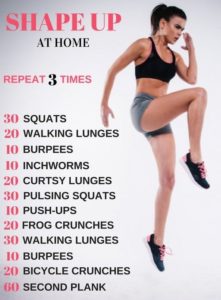
Click here for Simple Exercises -
Supermans – Who doesn’t want to think they have super powers? Great stretch as well when you picture trying to touch the opposing walls with your fingers and toes.
Starting Position: Lie on your stomach on a mat with your legs extended, ankles slightly plantarflexed (toes pointing away from your shins), arms extended overhead with palms facing each other. Relax your head to align it with your spine.
Upward Phase: Exhale, contract your abdominal and core muscles to stabilize your spine and slowly extend both hips (raise both legs) a few inches off the floor while simultaneously raising both arms a few inches off the floor. Keep both legs and arms extended and avoiding any rotation in each. Maintain your head and torso position, avoiding any arching in your back or raising of your head. Hold this position briefly.
Downward Phase: Gently inhale and lower your legs and arms back towards your starting position without any movement in your low back or hips.
Push-up – The Push-up is an oldie but goodie. You can modify intensity by changing hand placement.
Starting Position: Kneel on an exercise mat or floor and bring your feet together behind you.
Slowly bend forward to place your palms flat on the mat, positioning your hands shoulder-width apart with your fingers facing forward or turned slightly inward. Slowly shift your weight forward until your shoulders are positioned directly over your hands. Reposition your hands as needed to allow full extension of your body without any bend at the hips or knees. Stiffen your torso by contracting your core/abdominal muscles (“bracing”), your glute and quadriceps muscles and align your head with your spine. Place your feet together with your ankles toes pointed towards your shins.
Downward Phase: Slowly lower your body towards the floor while maintaining a rigid torso and head aligned with your spine. Do not allow your low back to sag or your hips to hike upwards during this downward phase. Continue to lower yourself until your chest or chin touch the mat/floor. Allow your elbows to flare outwards during the lowering phase.
Upward Phase: Press upwards through your arms while maintaining a rigid torso and head aligned with your spine. For extra strength think about pushing the floor away from you. Do not allow your low back to sag or your hips to hike upwards. Continue pressing until the arms are fully extended at the elbows.
An alternative position is to turn your hands to face forwards and keep your elbows close to your sides during the downward phase. This shifts the emphasis from the chest muscles onto the triceps and may reduce stresses in the shoulder joint.
Pushing through the heel and outside surface of your palm provides greater force in your press and stability to your shoulders.
Contralateral Limb Raises – Starting Position: Lie prone (on your stomach) on a mat with your legs extended, ankles slightly plantarflexed (toes pointing away from your shins), arms extended overhead with palms facing each other. Relax your head to align it with your spine.
Upward Phase: Exhale, contract your abdominal/core muscles to stabilize your spine and slowly raise one arm a few inches off the floor keeping your arm extended and avoiding any rotation in your arm. Maintain your head and torso position, avoiding any arching in your back or raising of your head. Hold this position briefly.
Downward Phase: Gently inhale and lower your arm back towards your starting position without any movement in your low back or hips.
Exercise Variation (1): From your starting position, contract your abdominal and core muscles to stabilize your spine and slowly extend one hip (raise one leg) a few inches off the floor keeping your leg extended, ankle plantarflexed (toes pointing away from your shins) and avoiding any rotation in your leg. Maintain your head and torso position, avoiding any arching in your back or raising of your head. Hold this position briefly before returning to your starting position.
Exercise Variation(2): From your starting position, contract your abdominal/core muscles to stabilize your spine and slowly extend one hip (raise one leg) a few inches off the floor while simultaneously raising the opposite arm a few inches off the floor. Keep both your leg and arm extended and avoiding any rotation in each. Maintain your head and torso position, avoiding any arching in your back or raising of your head. Hold this position briefly before returning to your starting position.
Bent Knee Push-up – Starting Position: Kneel on an exercise mat or floor and bring your feet together behind you.
Slowly bend forward to place your palms flat on the mat, positioning your hands shoulder-width apart with your fingers facing forward. Slowly shift your weight forward until your shoulders are positioned directly over your hands. Reposition your hands as needed to allow full extension of your body from the knees without any bend at the hips. Stiffen your torso by contracting your core and abdominal muscles (“bracing”).
Downward Phase: Slowly lower your body towards the floor while maintaining a rigid torso and head aligned with your spine. Do not allow your low back to sag or your hips to hike upwards during this downward phase. Continue to lower yourself until your chest or chin touch the mat or floor. Your elbows should remain close to the sides of your body or flare outwards slightly.
Upward Phase: Press upwards through your arms while maintaining a rigid torso and head aligned with your spine. Do not allow your low back to sag or your hips to hike upwards. Continue pressing until the arms are fully extended at the elbows.
Push-ups place stress upon the wrist joints. To alleviate some of this stress you may opt to use dumbbells and grip the handles rather than place your hands on the floor. If your are pressing from an elevation such as a dumbbell, you do not need to lower your chest or chin to the floor, but rather lower yourself until your chest or chin are level with the dumbbell handles.
Downward facing Dog – Slow and controlled movement very important – wonderful calf stretch.
Starting Position: Kneel on an exercise mat or floor and bring your feet together behind you. Slowly bend forward to place your palms flat on the mat, positioning your hands shoulder-width apart with your fingers facing forward. Slowly lift yourself into a push-up position, shifting your hands until your shoulders are positioned directly over your hands. Reposition your feet as needed to allow full extension of your body. Stiffen your torso by contracting your core and abdominal muscles to prevent any arching in your low back or hiking of your hips towards the ceiling.
Upward Phase: While maintaining a rigid torso and full extension in your arms and legs, slowly exhale and shift your weight backwards by pushing your hips backwards and upwards. Maintain your head alignment with your spine, but slowly move your head between your shoulders as your body moves backwards and attempt to push your heels towards the floor. Maintain the stiffness in your torso to prevent the tendency of your back to arch. Continue moving until your body forms an inverted-V, keeping both arms and legs extended and a neutral (flat) spine. Allow a slight bend in the knees if required to achieve the inverted-V position.
Downward Phase: Inhale and return your body to the starting push-up position, maintaining the alignment of all your body segments.
Bent-Knee Sit-up / Crunches – Most people don’t know how to perform a proper sit-up/crunch – that is until now. Core Power!
Starting Position: Lie in a supine (on your back) position on a mat with your knees bent, feet flat on the floor and heels 12 – 18″ from your tailbone.
Place your hands behind your head, squeezing your scapulae (shoulder blades) together and pulling your elbows back without arching your low back. This elbow position should be maintained throughout the exercise. Align your head with your spine, but allow it to move into slight flexion (moving the chin towards the chest) during the upward phase of the exercise.
Upward Phase: Exhale, contract your abdominal and core muscles and flex your chin slightly towards your chest while slowly curling your torso towards your thighs. The movement should focus on pulling your rib cage towards your pelvis (the neck stays relaxed while the chin is tucked towards the neck). Your feet, tailbone and lower back should remain in contact with the mat at all times. Continue curling up until your upper back is lifted off the mat. Hold this position briefly.
Downward Phase: Gently inhale and slowly uncurl (lower) your torso back towards the mat in a controlled fashion keeping your feet, tailbone and low back in contact with the mat.
Proper form is important for this exercise to prevent excessive stress on your low back. Individuals usually perform this movement too rapidly and recruit the hip flexors to assist with the upward phase. This technique tilts the pelvis anteriorly, increasing the stress on the low back and should be avoided. The abdominals connect the rib cage to the pelvis so the movement should focus on bringing these two body parts closer together while keeping the neck and shoulders relaxed.
Push-up with single-leg raise – A great progression from a regular Push-Up but remember to keep proper form.
Starting Position: Kneel on an exercise mat or floor and bring your feet together behind you.
Slowly bend forward to place your palms flat on the mat, positioning your hands shoulder-width apart with your fingers facing forward. Slowly shift your weight forward until your shoulders are positioned directly over your hands. Reposition your hands as needed to allow full extension of your body without any bend at the hips or knees. Stiffen your torso by contracting your core and abdominal muscles (“bracing”) and align your head with your spine. Place your feet together with your ankles dorsiflexed (toes pointed towards your shins).
Downward Phase: Slowly lower your body towards the floor while maintaining a rigid torso and head aligned with your spine. Do not allow your low back to sag or your hips to hike upwards during this downward phase, contract your glutes (butt) and quadriceps (thigh) muscles to create stability for your core. Continue to lower yourself until your chest or chin touch the mat or floor. Your elbows should remain close to the sides of your body or be allowed to flare outwards slightly.
Upward Phase: Press upwards through your arms while maintaining a rigid torso and head aligned with your spine. As your press upwards, extend your left hip to lift your left foot off the floor, keeping the knee extended. Attempt to avoid rotation in your hip as you raise the left leg off the floor. Do not allow your low back to sag or your hips to hike upwards. Continue pressing until the arms are fully extended at the elbows and your left leg is extended off the floor. Hold this position briefly before returning to your starting position. Repeat with your opposite leg
Pushing through the heel and outside surface of your palm provides greater force in your press and stability to your shoulders.
Front Plank – This is harder than it looks! Your back and abs will love you.
Starting Position: Lie prone (on your stomach) on an exercise mat or floor with your elbows close to your sides and directly under your shoulders, palms down and hands facing forward. Contract your quadriceps to extend your legs and dorsiflex your ankles (pull toes towards your shins). Contract your core and abdominal muscles to stiffen your torso.
Upward Phase : Slowly lift your entire torso off the floor or mat, maintaining a stiff torso and legs. Avoid any arching (sagging) in your low back, hiking (upwards) in your hips or bending in the knees. Avoid shrugging your shoulder and keep your shoulders positioned directly over your elbows with your palms facing down. Continue to breath while holding this position for a specified time (5+ seconds).
Downward Phase: While maintaining a stiff torso and extended knees, gently lower your body back towards the mat or floor before relaxing.
If you experience any pain in the low back with this movement, stop the exercise immediately and consult with your doctor.
Side Plank with Knee bent – Great way to add in hips work without the need for any equipment other than your own body weight.
Starting Position: Lie on your right side on an exercise mat with your left leg lying directly over your right leg and bend your knees to a comfortable position. Raise your upper body to support yourself on your right arm, your right elbow should bend to 90 degrees and be positioned directly under your shoulder. Align your head with your spine and keep your hips and lower knee in contact with the exercise mat.
Upward Phase: Exhale, gently contract your abdominal / core muscles to stiffen your spine and lift your hips off the mat, but keeping contact with your knee, and head aligned with your spine.
Lowering Phase: Inhale and gently return yourself to your starting position.
Exercise Variation: You can increase the exercise intensity by increasing the length of time you are in the raised position.
Spine reverse crunches – Advanced crunch that targets the entire core region. If you feel pain in your back – STOP.
For variety, convenience, and more structured home exercise, you can’t beat exercise videos. There are workouts for every age, gender, goal and interest and you can workout anytime you like in the privacy of your own home. The best thing about exercise videos: There are thousands upon thousands to choose from, so almost anyone can find a video they like. The worst thing about exercise videos: There are thousands upon thousands to choose from, making the search for the perfect video an overwhelming process.
The Internet may be your favorite way to waste time, but it also offers a wealth of resources for home and/or traveling exercisers. Not all content is created equal on the World Wide Web but, if you know where to look, you can find almost everything you need to know about exercise: How to set up a home gym, create your own exercise program, and learn the basics of cardio, strength training and how to get in shape with exercise.
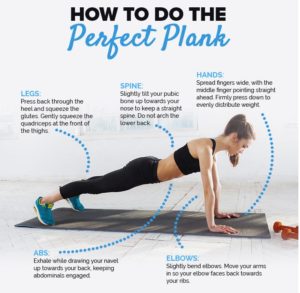
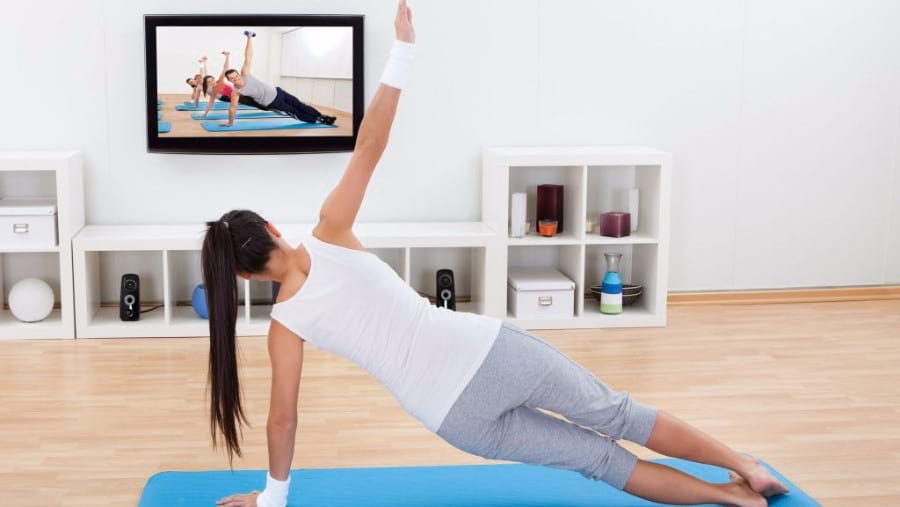

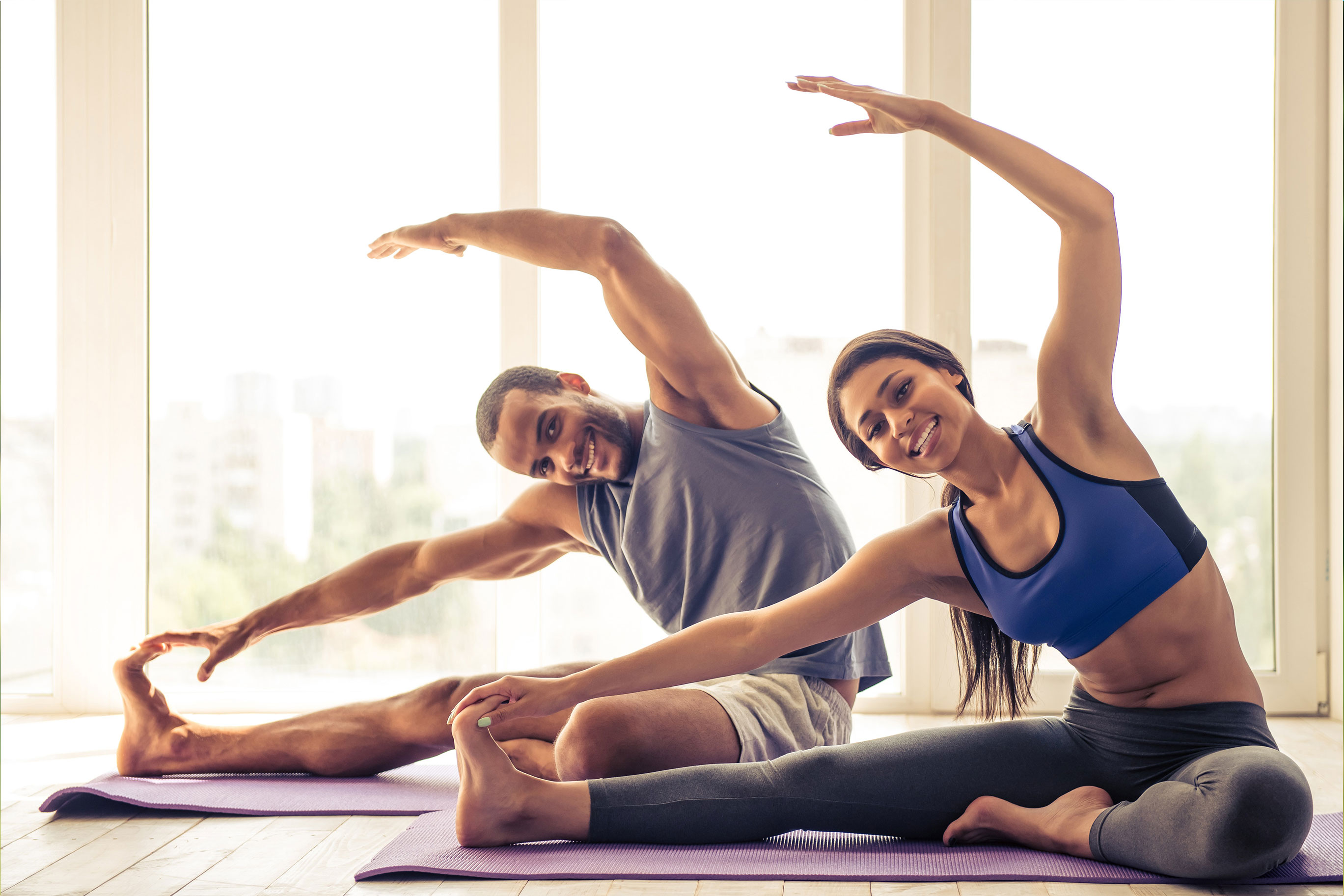


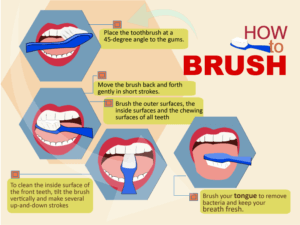
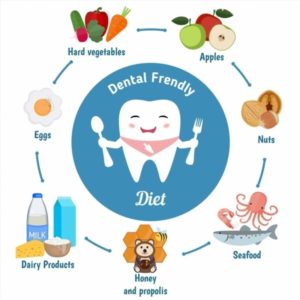



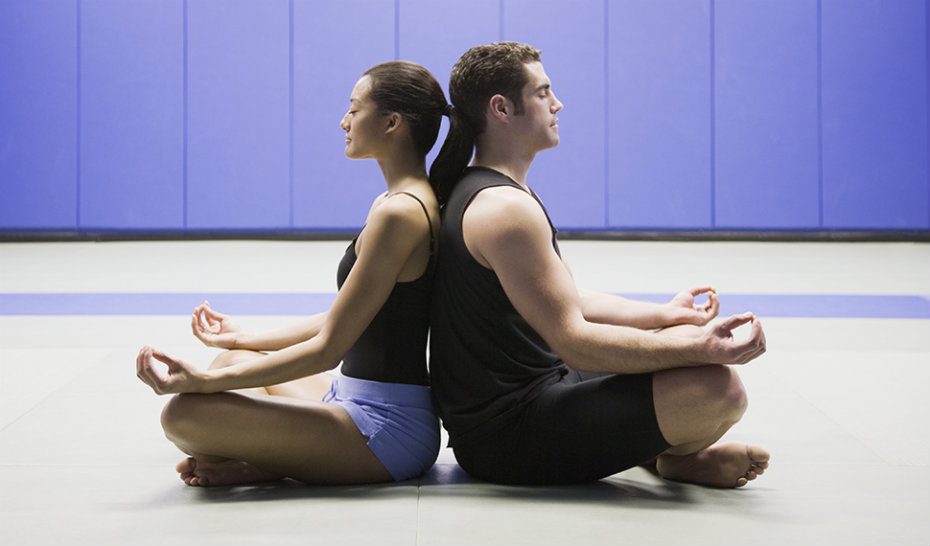




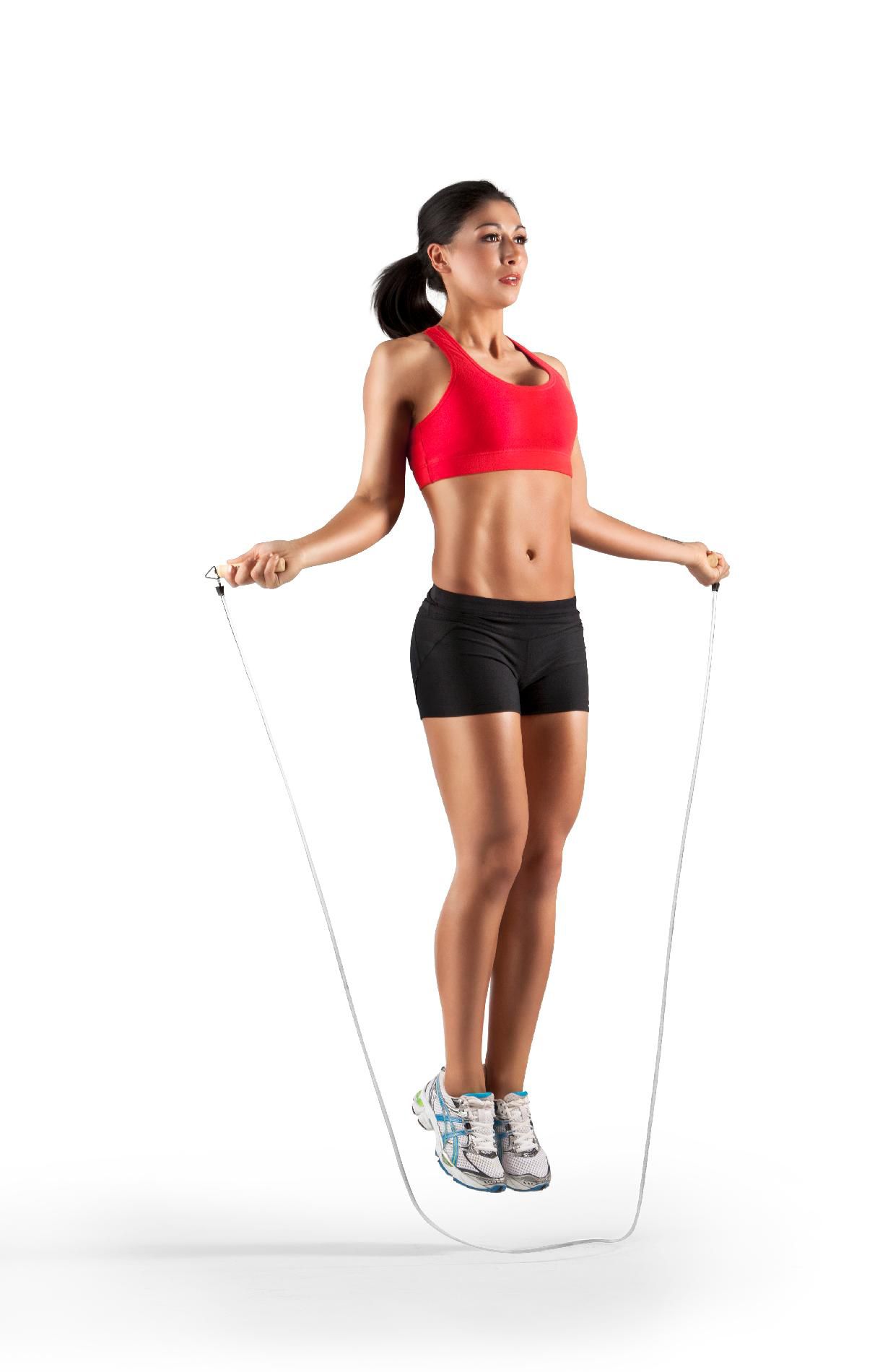
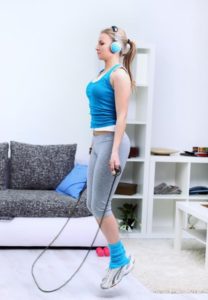

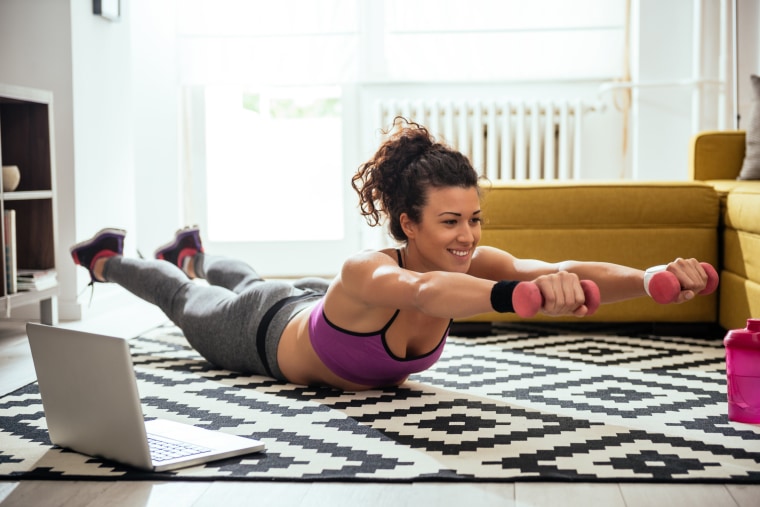

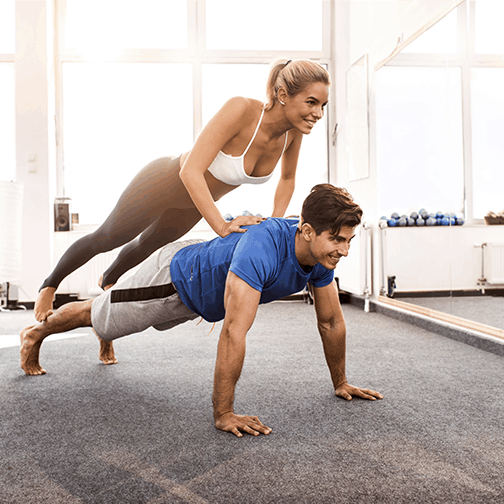














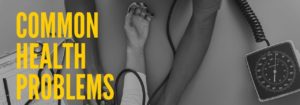









.jpg?w=640&auto=format%2Ccompress)


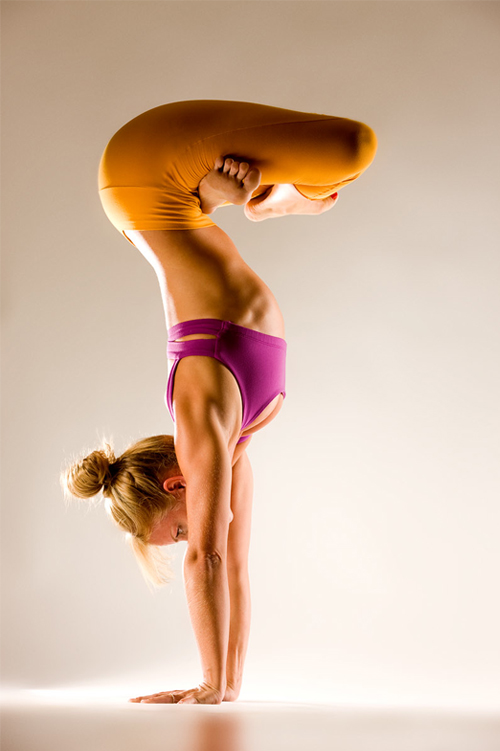 Hand Stand – The Prayer Twist
Hand Stand – The Prayer Twist